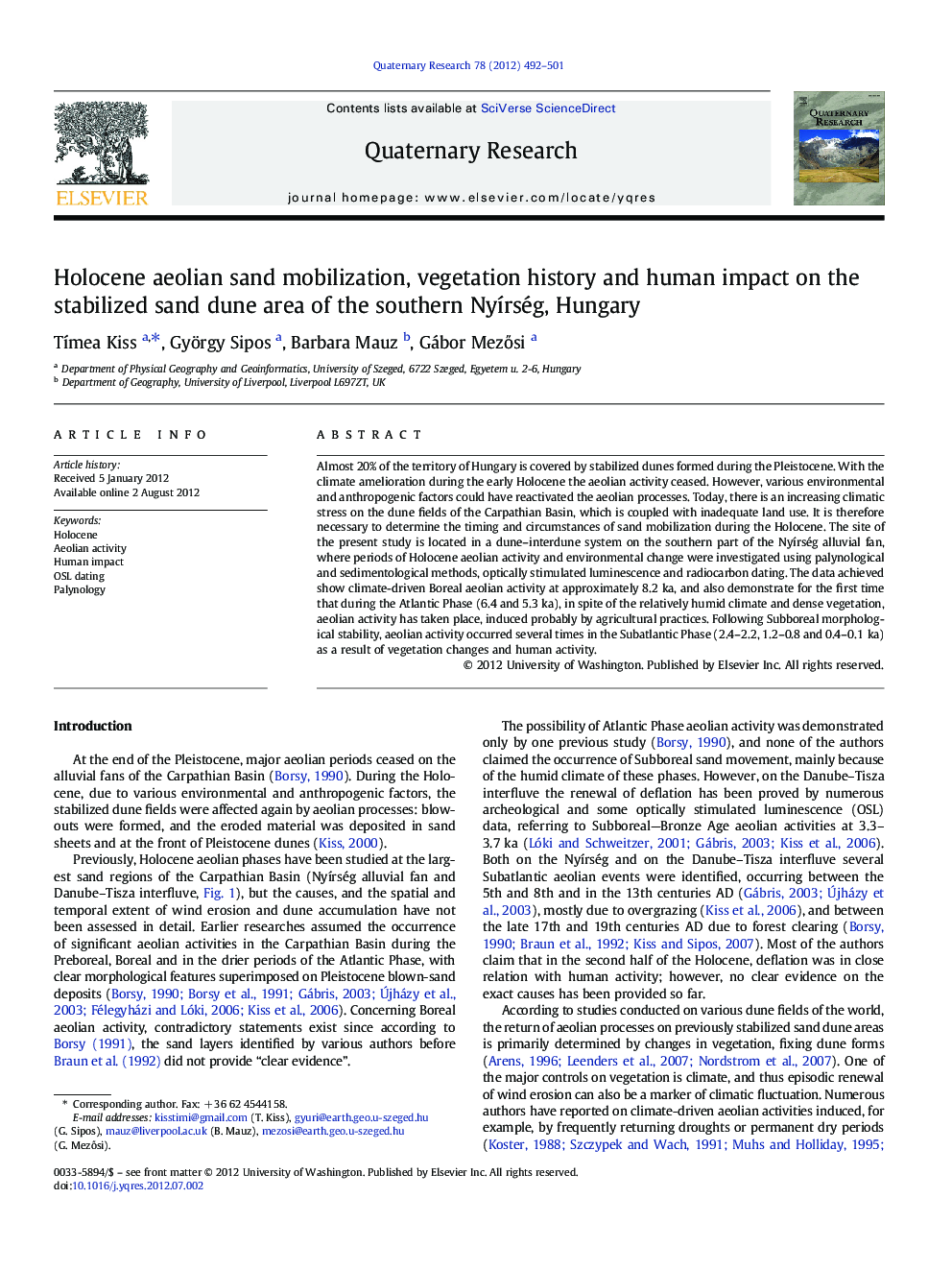| Article ID | Journal | Published Year | Pages | File Type |
|---|---|---|---|---|
| 1045612 | Quaternary Research | 2012 | 10 Pages |
Almost 20% of the territory of Hungary is covered by stabilized dunes formed during the Pleistocene. With the climate amelioration during the early Holocene the aeolian activity ceased. However, various environmental and anthropogenic factors could have reactivated the aeolian processes. Today, there is an increasing climatic stress on the dune fields of the Carpathian Basin, which is coupled with inadequate land use. It is therefore necessary to determine the timing and circumstances of sand mobilization during the Holocene. The site of the present study is located in a dune–interdune system on the southern part of the Nyírség alluvial fan, where periods of Holocene aeolian activity and environmental change were investigated using palynological and sedimentological methods, optically stimulated luminescence and radiocarbon dating. The data achieved show climate-driven Boreal aeolian activity at approximately 8.2 ka, and also demonstrate for the first time that during the Atlantic Phase (6.4 and 5.3 ka), in spite of the relatively humid climate and dense vegetation, aeolian activity has taken place, induced probably by agricultural practices. Following Subboreal morphological stability, aeolian activity occurred several times in the Subatlantic Phase (2.4–2.2, 1.2–0.8 and 0.4–0.1 ka) as a result of vegetation changes and human activity.
